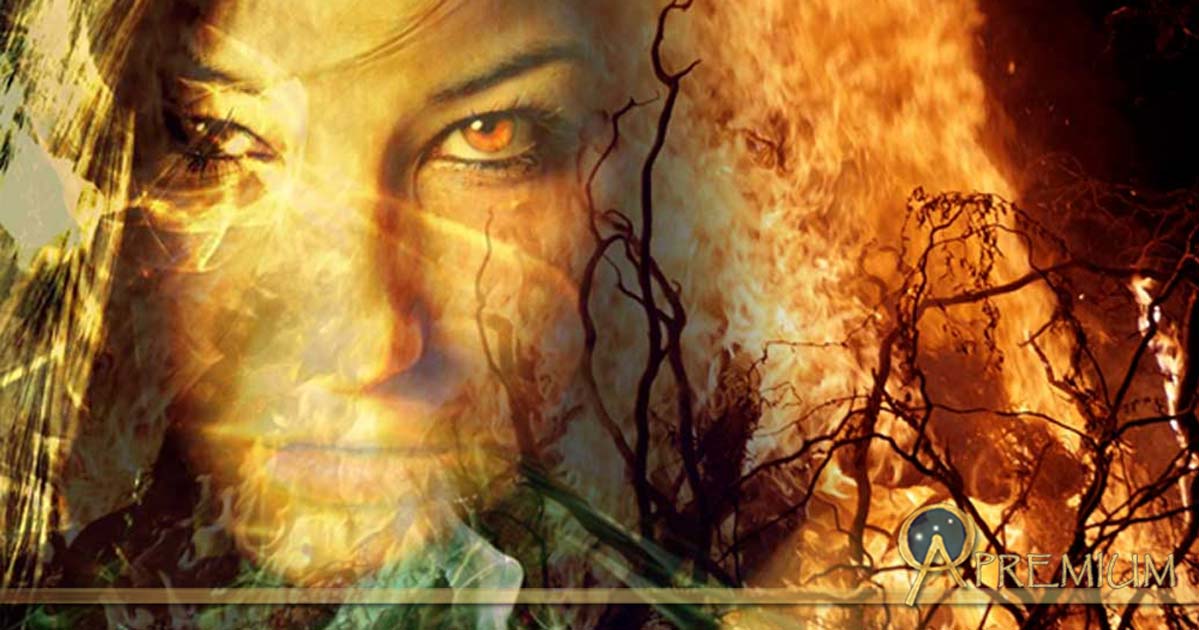Witch of Eye Burned Alive at the Stake: Did She Use Black Magic to Bewitch a King in a Game of Thrones-Style Plot?
For over 900 years, people have been telling stories of wicked witches who have used Black Magic to overthrow kings. Morgan Le Fay in Arthurian legends of the early 12th century is thought to have inspired Melisandre in George R.R. Martin’s Game of Thrones. But has there ever been a real-life historical model for such a person?
In England, the prime candidate was Margery Jourdemayne, better known as the Witch of Eye, who in 1441 was accused of heretical witchcraft as part of a larger plot against King Henry VI. In fact, Margery’s case was so notorious she even features in William Shakespeare’s play History of Henry VI, Part II. However, before we meet Margery Jourdemayne, let’s first set the historical scene…
When a Baby Ruled All of England and France
The time was the mid-15th century and the location was England. On the throne was King Henry VI—the only child of Henry V, a monarch who had created an empire (during the long-running Hundred Years’ War AD 1337-to-1453) in which the kings of England controlled more of France than the kings of France. Following the unexpected death of King Henry V at the age of 36, his son acceded to the throne in 1422 when he was just nine months old. A few weeks later, he was also declared the king of France; not that any of this did young Henry any good as he was still an infant and all the powers of the state were exercised by a Regency Council comprising the leading dukes and earls of the realm.

Accession of Henry VI. He is shown at the age of nine months. (Public Domain)
Predictably, the nobles were more interested in what they could personally gain from being associated with the Regency Council, and very quickly dynastic splits began emerging as rival families vied for power and influence over the king. Among the most influential was the late King Henry V’s youngest brother Humphrey, Duke of Gloucester, who held the position of Lord Protector and Defender of the Realm.

A fifteenth century drawing of Gloucester (Public Domain)
In 1428 Humphrey had his first marriage annulled so he could marry his mistress Eleanor Cobham (sometime between 1428 and 1431) a woman variously described as “beautiful, intelligent, and ambitious…” “a woman distinguished in her form…” and “beautiful and marvelously pleasant.” Over the next few years, Humphrey and Eleanor lived at La Plesaunce, their own palace at Greenwich which rivaled the Royal Court in terms of its luxury. Then in 1435, Humphrey’s elder brother John, Duke of Bedford, died. This not only made Humphrey the most influential member of the Regency Council but also the ‘heir presumptive’ to the English throne.

Humphrey, Duke of Gloucester annuls his first marriage and marries his mistress, Eleanor (Public Domain)
The key point here is King Henry VI was still a minor, unmarried, and had no children so if he were to die, the crown would then pass to the late Henry V’s surviving brother Humphrey and, in turn, his wife Eleanor, (now the Duchess of Gloucester) would become queen. But, King Henry didn’t die, and in 1437 he was declared of age, assumed the reins of government and began making decisions that clashed with the views of his uncle, the Duke of Gloucester.

King Henry VI as a young man. (Public Domain)
Necromancy and the Black Arts Against the King
It was against this background, when the Duke’s fortunes were at their lowest, that Eleanor began consulting astrologers to try to divine what the future held; both for her – and the king. The astrologers cast two horoscopes: one for the Duchess and the other for Henry VI, the latter predicting the King would suffer a life-threatening illness during the twentieth year of his reign (1441 to 1442).
Unfortunately, rumors of the prediction reached both the king and his advisers and, in due course, they were traced back to a trio of clerics and scholars: Roger Bolingbroke (or Bolyngbroke), John Hume (or Home), and Thomas Southwell, who were all members of the Duke of Gloucester’s household.
This FREE PREVIEW is just a taste of the great benefits you can find at Ancient Origins Premium.
Join us there ( with easy, instant access ) and reap the rewards: NO MORE ADS, NO POPUPS, GET FREE eBOOKS, JOIN WEBINARS, EXPEDITIONS, WIN GIFT GIVEAWAYS & more!
Charles Christian is a professional writer, editor, award-winning journalist and former Reuters correspondent. His non-fiction books include Writing Genre Fiction: Creating Imaginary Worlds: The 12 Rules
Charles has presented a variety of excellent talks with AO Premium on ancient legends, surprising folklore, and creepy and cool traditions:

- Tales of Conspiracy, Betrayal and Cruelty - a Short History of how the English Ruling Class Behaved During the Middle Ages
- Werewolf or Warrior? Where do our Folklore Tales come from?
- From Saxon Sirens to Sacred Orchards - Modern Traditions, Pagan Origins
Top Image: Witch of Eye was burned at the stake. Fire and witch (Public Domain); Deriv.

















